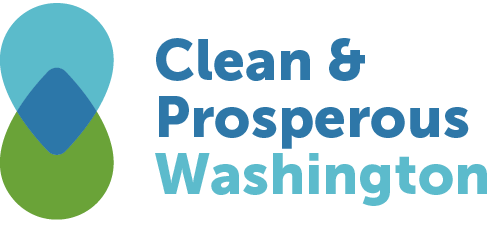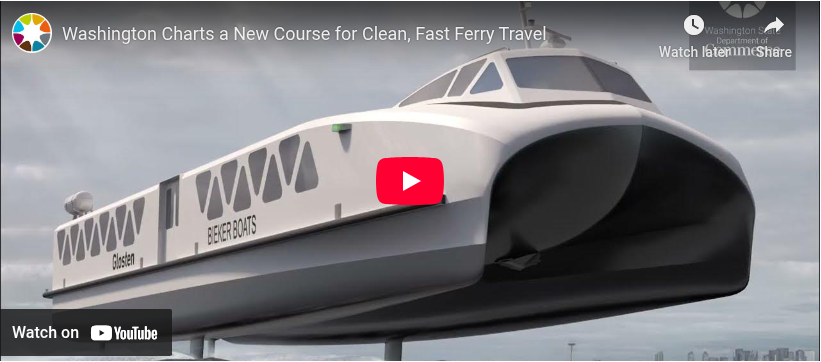Climate Commitments in the Budget Packages Passed on Sine Die
During difficult financial environments, Washington’s Climate Commitment Act becomes all the more vital and effective. Our nation-leading, broadly-supported cap-and-invest system provides us with an independent, market-based revenue source that is unaffected by broader budget challenges or federal uncertainty. Thanks in no small part to the Climate Commitment Act, we are excited to see many significant investments in climate action and clean energy in the budgets passed by the Legislature on sine die.
You can find a breakdown of bill progress in last week’s newsletter.

Topline Numbers
The 2025-2027 biennium budget passed by the Legislature includes $3 billion in Climate Commitment Act-generated revenue, with the majority of spending going toward efforts to decarbonize our transportation sector, which accounts for nearly 40 percent of statewide greenhouse gas emissions.
Key Transportation Budget Takeaways
As a primer, you can find our breakdown of the initial transportation budget proposal here.
Truck decarbonization
We are thrilled that the Legislature allocated $126 million for the Medium- and Heavy-Duty (MHD) Zero-Emission Vehicle (ZEV) voucher program, which represents approximately $20 million in new investments from the previous biennium’s budget. Even in a challenging budget environment, this increase shows continued commitment from the Legislature for this important work.
In addition to the MHD ZEV voucher program, the Legislature allocates $25 million in grants for the deployment of alternative fuel vehicle charging and refueling infrastructure along state highways, and $15 million specifically to boost hydrogen infrastructure available to MHD vehicles. Finally, the Legislature increased funding for electric school buses, which are vital for improving the air Washington students, families, and teachers breathe.
Ferry and port electrification
The Legislature’s budget accounted for some delays in hybrid-electric ferry conversion proposed by the Governor. However, the broader commitment to ferry and port electrification remains. In addition to converting diesel ferries to hybrid-electric, the budget includes $28 million for shorepower at the Northwest Seaport Alliance and $26.5 million for port electrification grants.
The data clearly shows that ferry and port electrification has extremely high return on investment in terms of emissions reduction, and it’s crucial that these projects remain a priority for our state.
In case you missed it: Last week, the Washington State Department of Commerce released an exciting new update on the design for an all-electric hydrofoil ferry. You can read more and explore the design here.
Sustainable aviation fuel (SAF)
The final budget passed by the Legislature includes over $10 million in funding for sustainable aviation fuel (also called alternative jet fuel). Continued efforts to boost the SAF ecosystem are crucial for helping reduce transportation emissions while creating green jobs and generating economic opportunity.
Key Capital & Operating Budget Takeaways
You can find our breakdown of the initial capital budget proposal here.
Dairy Digesters
The Legislature adopted $13.7 million for dairy digester competitive grants. Funding for dairy digesters is important to the competitiveness of Washington dairies and is one of the highest yielding investments in terms of emissions reductions. You can find more information on the efficacy of dairy digesters by exploring Clean & Prosperous Institute’s one-pager on the Washington State University Knott Dairy Center Digester.
Hard-to-Decarbonize Grants
The Legislature reappropriated $49.8 million in funding for hard-to-decarbonize and economic development grants. These grants have significant return-on-investment and are crucial for facilitating emissions reductions in complex industrial processes.
Industrial Symbiosis
The Legislature adopted $5 million for industrial symbiosis, which is a growing and innovative field in waste reduction. These investments will help ensure Washington joins states like California and Texas in serving as a hub for clean, efficient industrial sites.
Improving Indoor Air Quality & Energy Efficiency
The Legislature also makes significant investments to improve indoor air quality and energy efficiency in public buildings like schools. These investments include: $35 million for Weatherization Plus Health, $17.5 million for classroom indoor air quality projects, and $10 million in new funding for Clean Energy Community Grants program, which distributes grants to facilities across the state, including schools.
Electric Vehicle (EV) Infrastructure
The Legislature adopted approximately $128 million for electric vehicle charging infrastructure, which represents approximately $23 million in new spending, in addition to reappropriations. While this does represent a slower rate of spending on EVs, Washington remains a national leader in EV adoption. Clean & Prosperous Institute recently published a newsletter that provides a deep-dive on Washington’s EV progress and outlook.
What’s Next
Sunday, April 27 was sine die, or the conclusion of the regular legislative session. The budget adopted by the Legislature is onto the Governor for review and action.
Clean & Prosperous Washington will provide updates on priority legislation and budget items as relevant. Stay tuned for a future newsletter breaking down how these investments reduce emissions, catalyze innovation, and create jobs.


